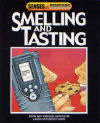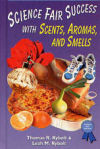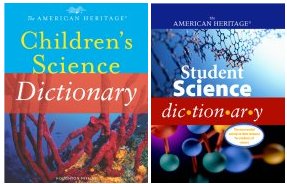Picture the Smell Additional Information
Share this:
- Share via email (Opens in new window) Email
- Click to share on Facebook (Opens in new window) Facebook
- Click to share on X (Opens in new window) X
- Click to share on Pinterest (Opens in new window) Pinterest
- Click to share on Reddit (Opens in new window) Reddit
- Share to Google Classroom (Opens in new window) Google Classroom
- Click to print (Opens in new window) Print
Find out more about Ken Suslick’s work on developing an electronic nose at www.scs.uiuc.edu/suslick/smellseeing.html (University of Illinois) and www.chemsensing.com/(ChemSensing).
To learn more about NASA’s ENose, go to enose.jpl.nasa.gov/, www.jpl.nasa.gov/news/features.cfm?feature=493, and science.nasa.gov/headlines/y2004/06oct_enose.htm. For an activity related to detecting smells, see spaceplace.nasa.gov/en/kids/enose_do1.shtml(NASA).
Ramsayer, Kate. 2005. Making sense of scents. Science News for Kids (June 1). Available at http://www.sciencenewsforkids.org/2005/05/making-sense-of-scents-2/.
Sohn, Emily. 2005. The smell of trust. Science News for Kids (June 8). Available at http://www.sciencenewsforkids.org/2005/06/the-smell-of-trust-2/.
Webb, Sarah. 2005. Roboroach and company. Science News for Kids (Sept. 7). Available at http://www.sciencenewsforkids.org/2005/08/roboroach-and-company-2/.
LabZone
Totally Tasteless
Try to taste the difference
between foods while holding your nose.
http://www.sciencenewsforkids.org/articles/20060315/LZActivity.asp
The Triangle Test
Can you tell the difference between two closely related smells?
http://www.sciencenewsforkids.org/articles/20050420/LZActivity.asp
Books recommended by SearchIt!Science:
 |
Smelling and Tasting — Alvin Silverstein, Virginia Silverstein, Laura Silverstein Nunn
Published by Twenty-First Century Books/Millbrook Press, 2002.
Did you know that the senses of smell and taste are often linked to each other? Whether we smell flowers or spoiled milk, we are experiencing an important part of the “big picture” of the world around us. If we pay attention to the world of smell, we can experience a world we might not realize exists! Many animals have a stronger sense of smell than humans do. Our ability to taste is on our tongue. We experience pleasant, familiar smells of our family and the embarrassing body odors that might be a sign of illness. Scientists have been working on developing a device that can detect illness by “smelling” and “tasting.” |
 |
Science Fair Success with Scents, Aromas, and Smells —Thomas R. Rybolt, Leah M. Rybolt
Published by Enslow Publishers, 2002.
Sniff out some great science fair experiments in this book about aromas, scents, and smells. Conduct several scent-sational experiments that help you discover answers to your questions about why things smell. How does your brain interpret the taste of the food you eat? Do odor molecules pass through solids the same way they pass through the air? Can you learn new odors the same way you learn how to spell new words? Projects are easy to complete and use materials that are easy to obtain. |
Power Words
acid A chemical compound that tastes sour and has a tendency to eat away at other substances. Acids form salts and water when they come in contact with the chemical compounds known as bases. Acids can be weak, like lemon juice and vinegar, or strong, like sulfuric acid and the acids that help us digest food in the stomach.
base A chemical compound that tastes bitter and feels slippery when mixed with water. Bases form salt and water when they come in contact with certain metals and with the chemical compounds known as acids. Baking soda is an example of a base.
sense organ An organ, part, or cell in a living thing that is sensitive to something in the environment, such as sound, touch, or light. The ear and nose are sense organs in mammals.
sensor A device that produces an electric signal in response to something in its environment. The signal is sent to another device or to a machine. A sensor in a printer detects that the paper tray is empty and sends a signal for the printer to indicate that the tray is out of paper.
Copyright © 2002, 2003 Houghton-Mifflin Company. All rights reserved. Used with permission.
